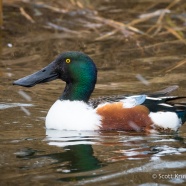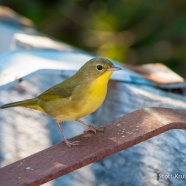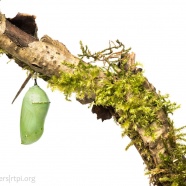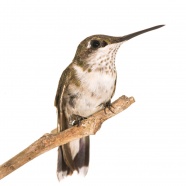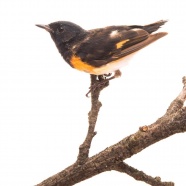Drake Northern Shoveler
I finally had the chance to properly photograph a beautiful drake Northern Shoveler (Anas clypeata) late last winter. This bird was on the way north for the breeding season, stopping off at a warm spot along a river marsh. I post him now because earlier this week a colleague of mine saw a small flock of Northern Shovelers flying by on the way south already! It is hard to believe we are that deep into the season, but the winter waterfowl are on the way. What is your favorite species of duck? Any you can’t wait to add to your life list? Scott Kruitbosch Conservation & Outreach...
Read MoreCommon Yellowthroat Sailor
You could say this Common Yellowthroat is ready to set sail to the south…fair winds and following seas, friend! Scott Kruitbosch Conservation & Outreach Coordinator
Read MoreMonarch chrysalis
To whom does this stunning, sea-green chrysalis belong? Why, to the lovely “Danaus plexippus” of course! Before the monarch caterpillar inside initiated it’s metamorphic transformation, it would have fattened up on milkweed leaves in preparation for the process. Once it emerges, the adult butterfly has a long journey to Mexico ahead. Quite a remarkable life cycle; It’s no wonder that a young Roger Tory Peterson was fascinated with our local Lepidopterans!
Read MoreBejeweled Journeyer
If you look closely, you will notice a metal band on the leg of this young Ruby-throated Hummingbird. It serves to identify unique individuals of these tiny birds and allows biologists to track their migration path. Ruby-throated Hummingbirds breed in the eastern USA during the summer, but they spend the winter in lower Central America. This bird was banded on an RTPI project in western Costa Rica and returned to the same site a year later, after it had made another successful trip to North America – a journey of at least 4,000 miles. Impressive for a bird that weighs not much more than a...
Read MoreAmerican Redstart Changing into Fall Plumage
Many of our migratory birds are on their second or third brood for the season already and slowly are starting to prepare for their journey south. Most flashy warblers molt out of their brightly colored breeding plumage in the next few weeks and will start migration once all flight feathers are grown in to the point that they can safely sustain their long journey. Although we have not quite reached Roger Tory Peterson’s notorious “Confusing Fall Warblers” level of alternate plumage yet, the first signs are here. Even though this male American Redstart still displays its characteristic black...
Read More



